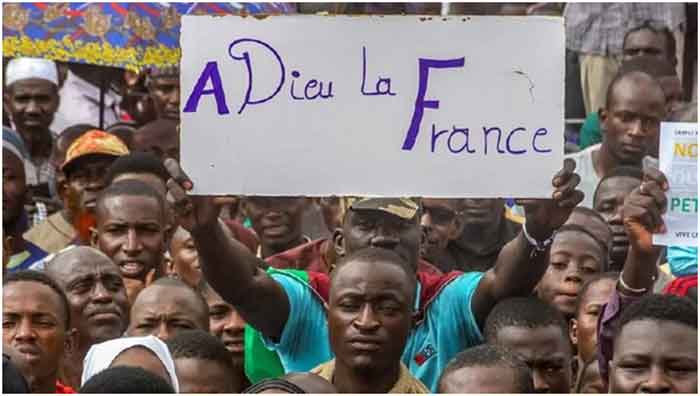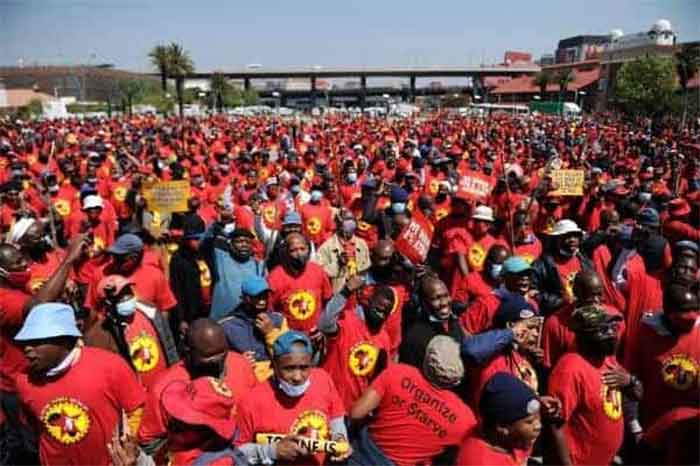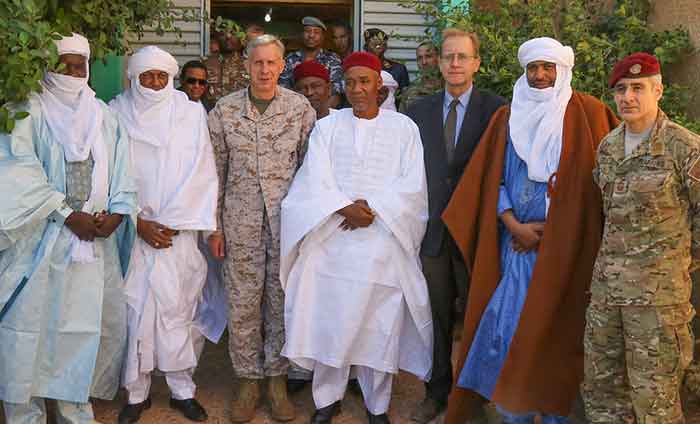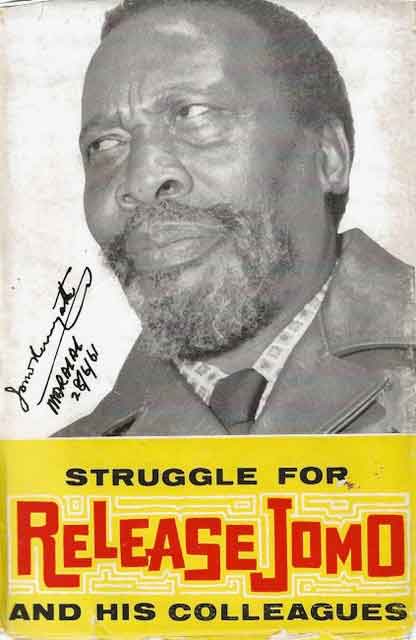
Kenya faces critical times today as the government of President Ruto moves full speed towards the agenda set by USA via IMF directives. The push on Kenya to turn ‘West” and embrace capitalism wholesale should be seen in the context of global trends of imperialist offensives as it faces existential threats. These offensives are on three key fronts — against Russia, China and Palestine in a desperate attempt to maintain its economic, political and military power. The attacks on Russia are on economic and military front, using the right-wing government it has created in Ukraine. That method is now being prepared to attack China using economic attacks at present, but preparing Taiwan as the Ukraine of planned war on China. The war against Palestine is a feature from the earlier phase of colonialism when people of entire continents were massacred, exiled, impoverished and their land taken forcefully. Thus the entire populations of North America and Australia were forcefully ‘disappeared’. This is what the occupied Palestine faces today. This time, it is an imperialist-created entity they call ‘Israel’ that is occupying and trying to destroy Palestine.
This imperialist drive for world control has repercussions in Africa but is particularly evident in Kenya whose President has followed the dictates of USA by supporting ‘Israel’ fully. In this, he has no support from the people and is forced to use police to suppress activities supporting the Palestinian struggle. The support for Palestine has a hidden aspect as the people of Kenya also seek liberation from the Ruto’s war on working people in Kenya. The forces that support Palestinian liberation are the potential resistance to capitalism in Kenya. Hence the fierce attack on them by the police. But such activities also provide opportunities to organise and unify these forces for future resistance in Kenya.
In this national, and linked international, struggle in Kenya, one voice is missing — that of the ‘Left’. While people have been marching in Mombasa, Kisumu and Nairobi, these demonstrations are not carried out on a national level by a party or a movement of the Left. They are not necessarily linked with the struggle to liberate Kenya from capitalism, nor a movement for socialism, nor action against the current government’s policies devised in offices of the World Bank and IMF.
This contrasts with earlier periods in Kenya’s history after independence when there were organised voices against capitalism and for socialism. Kenya People’s Union, with its slogan Uhuru na Ujamaa, openly stated its opposition to capitalism and its aim of achieving socialism. In its Manifesto (pp. 3-4) it stated:
The K.P.U. condemns the Government’s and K.A.N.U.’s capitalist policies: It is opposed to the creation of a small class of rich people while the masses live in poverty. It will pursue truly socialist policies to benefit the Wananchi. It will share out the nation’s wealth more equitably among the people, extend national control over the means of production and break the foreigners grip on the Economy.
The December Twelve Movement and MWAKENYA aimed for a similar vision from the underground. There were also anti-imperialist calls from students — secondary, college and universities, — workers and professionals against capitalist policies.
As the economic situation of working class deteriorates further today, where is the voice — and more important, action — of the Left in Kenya today? But before looking for answer to it, there is another, more important question: ‘Is there a Left in Kenya?’ These are key question as the country sinks deeper into the capitalist-imperialism sinkhole. According to Wanjohi wa Makokha (2023), ‘Left or right matters little these days. We are in the age of postmodernity in Kenya and its attendant manifestations all over’.
It is, first of all, necessary to be clear about what is meant by Left. Gould (2019,49) describes Left as: ‘A general term for the Communist Party and other genuine militant and democratic bodies’. But the term needs to be seen it the Kenyan context. There are a number of aspects associated with it in Kenya. Left is the opposite of the Right, where the Right represents capitalism and supports imperialism. It is the ideology of the ruling class from the time of independence. In this situation, the Left then is the ideology of those not in power – ‘the people”, ie. working class and all working people, including peasants, pastoralists, fisher people and those working in the ‘informal sector’.
There are a number of attributes associated with the term ‘Left’. The key ones are anti-capitalism, anti-imperialism, and for socialism. The recognition of classes and class struggles follow from these key ones. Also implied is the need for an organisation standing for these values, as without it, there is no effective resistance to capitalism and imperialism, no effective tool for working class struggle against the bourgeoisie and the comprador government.
There is undoubtedly anti-capitalist and anti-imperialism sentiments among working people in Kenya. This is evident in everyday resistance of workers on strikes, of peasants in many different ways and also in the demonstrations and actions against government policies and police actions of shoot-to-kill and violence against youth and police corruption. Demonstrations supporting Occupied Palestine by the imperialist-imposed ‘Israel’ are evidence of anti-imperialist sentiments among the people.
The missing element for a Left presence in Kenya then is the absence of a Left organisation that can channel the anti-capitalist sentiments and actions into nation-wide, effective resistance to capitalism and its ruling class and lead a serious attempt to establish socialism. An important organisation that gave a clear ideological lead to the war of independence — trade unions —is no longer present as it has been captured by the bourgeoisie state.
Capitalism is well entrenched in Kenya, initially by the departing colonial power, Britain. The key foundation it laid for this was the capture of peasant lands which it then turned into a commodity for ‘willing-buyers-and-willing-sellers’ — except no working class person could afford the price of buying their own, stolen land. USA took over the consolidation of capitalism after independence.
The struggle for liberating the country from the death-grip of capitalism will need a powerful organisation, much like the Land and Freedom Army — Mau Mau —to wage a relentless war against the bourgeoisie and its comprador class installed as the rulers. No such organisation is evident today. Perhaps the militant trade unionists at grassroots will join hands with struggling small and middle peasants and various youth groups, study circles and community organisations and form a powerful force of resistance. It can be done, as shown in various countries in Latin America. But not without a long struggle of creating class consciousness among people. Political education and liberating minds from capitalist mindsets is the first stage of a Left-led revolution.
A party of the Left is not created in a factory, ready to join the class struggle. Parties develop and grow as part of the struggle. Mau Mau grew as part of the intense struggle against the British colonial massacres, genocide and land robbery. The Kenya People’s Union grew from the struggles within KANU when it turned capitalist with the active involvement of Jomo Kenyatta. The December Twelve Movement, MWAKENYA and UMOJA all developed in the struggle against Moi’s reign of terror.
So the future can see the emergence of a strong Left. It is not too late. Capitalism is going nowhere until it is forced out.
Editorial Essay: TKS No. 7 (Forthcoming)
REFERENCES
Gould, Harry L. (2019): Marxist Glossary. New York: New Outlook Publishers.
Kenya Peoples’ Union (1966): K.P.U. Manifesto for 1966 By-Elections. Nairobi: KPU.
Makokha, Wanjohi wa (2023): Personal communications, WhatsApp, 24-10-2023.
Shiraz Durrani is a Kenyan political exile living in London. He has worked at the University of Nairobi as well as various public libraries in Britain where he also lectured at the London Metropolitan University. Shiraz has written many articles and addressed conferences on aspects of Kenyan history and on politics of information in the context of colonialism and imperialism. His books include Kenya’s War of Independence: Mau Mau and its Legacy of Resistance to Colonialism and Imperialism, 1948-1990 (2018, Vita Books). He has also edited Makhan Singh – A Revolutionary Kenyan Trade Unionist (2017, Vita Books) and Pio Gama Pinto: Kenya’s Unsung Martyr,1927 – 1965 (2018, Vita Books). He is a co-editor of The Kenya Socialist. and edited Essays on Pan-Africanism (2022, Vita Books, Nairobi). His latest book (2023) is Two Paths Ahead: The Ideological Struggle between Capitalism and Socialism in Kenya, 1960-1990. Some of his articles are available at https://independent.academia.edu/DurraniShiraz and books at: https://www.africanbookscollective.com/search-results?form.keywords=vita+books















































